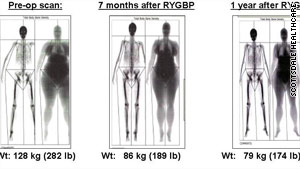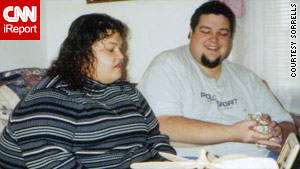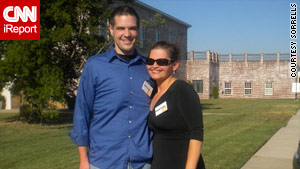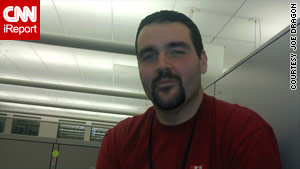7 un-fun health milestonesBy Meryl Davids Landau
How to handle braces, casts, stitches and more -- without the drama:
1. A broken bone
You watch as if in slow motion as your child crashes his scooter or falls from the jungle gym, your worst fears realized as he screams and clutches his arm or leg. If the bone is actually protruding, don't move him; call 911.
Otherwise, call your doctor or head to the ER, says Meridith Sonnett, M.D., director of pediatric emergency medicine at the Morgan Stanley Children's Hospital of New York-Presbyterian.
The ouch factor
"Breaking a bone hurts right away and usually a lot," Dr. Sonnett says, so expect your child to reprise the Home Alone scream -- over and over. Younger kids may hate holding still for the x-ray, not to mention it could be uncomfortable depending on how they need to be positioned.
And, of course, being immobilized for weeks or months in a tight, itchy cast is awful. Fortunately, if the doc does need to manipulate the bone extensively -- a horribly painful procedure -- your child will be sedated.
On-the-spot soothers
Ask for pain relief right away -- in fact, insist on it. You'll be there for a while, and there's no need for your child to suffer needlessly. Then distract, distract, distract. "When my ten-year-old son broke his arm last year, we talked and giggled about the science-fiction books he'd been reading while we waited in the ER," says Frances Schagen of Kentville, Nova Scotia, Canada.
Littler kids will feel better just snuggling with you -- ask if he can sit on your lap for the x-ray or even the casting. If your child is at least 8, look into whether he can have a removable, soft cast; if a hard one is inevitable, consider a waterproof variety.
"The downside is it may start to smell after a while and so need to be replaced a few times. But for some kids, being able to swim all summer is worth it," Dr. Sonnett says. You'll still need to cover it at bathtime so that it will last longer.
Thinking ahead
Okay, no one really prepares for a broken bone, but if it does happen, try to take extra care about the words you use while waiting for the doctor. Even "broken bone" could conjure images of shattered glass in your child's head.
Instead, you might simply want to say that it's hurt or injured, cautions Betsy Cetnarowski, a child life specialist at Akron Children's Hospital in Ohio. Older kids can handle more detail, so use simple medical terminology and walk them through what they may see, hear, and feel.
2. A from-the-vein blood draw
Most baby and toddler screening blood tests involve a quick prick of the finger. But to get a firm diagnosis, your child's doctor needs a bigger sample -- and that means inserting a needle into a vein.
The ouch factor
The tension of the band hurts, the needle pinches -- and the trauma of holding still with the thing dangling out of her arm is worst of all. Depending on your child's age, you may be asked to restrain her -- which could be more upsetting for you than her! "My son had his first big blood draw when he turned one," says Elizabeth Shaw, Parenting's deputy editor.
"The lab tech instructed me to lie across his shoulders so he couldn't move. As he screamed and looked at me with these big, pleading eyes, I cried right along with him." Plus, a small number of kids will actually experience a blood or needle phobia that could cause fainting, says Martin Antony, Ph.D., a psychologist at Ryerson University in Toronto and author of Overcoming Medical Phobias.
On-the-spot soothers
Before the technician gets started, ask for a topical anesthetic. If your child gets light-headed during the procedure, instruct her to tighten all the muscles in her body except the ones being used for the draw, Antony advises; this should raise dipping blood pressure enough to stave off a swoon.
For some kids, pointing out interesting aspects of the experience can relieve fear, says Lori Gottwein, a child life specialist at the Children's Hospital of Wisconsin in Milwaukee.
That's what Jennifer Harshman did for her 14-month-old son, Alexander. Knowing his fascination with how things work, the Carmi, IL, mom turned it into a science experiment of sorts. "As the technician laid out her supplies, I told him, 'Look, she's getting ready to take some blood from your arm with those tools,'" Harshman recalls. "Then I encouraged him to watch the blood flow into the tubes."
Alexander stared intently -- and never cried. But if you think your child is better off not watching, by all means have her look away.
Thinking ahead
Before arriving at the lab, give your child a brief explanation of what's going to happen and, most important, why. Try not to downplay the pain, but avoid overdramatizing it if you can.
Instead, Gottwein says, use age-appropriate, sense-oriented explanations, such as "The nurse will wrap something like a rubber band around your arm, which will feel tight." You can also do some pretending with a doll at home to help toddlers and preschoolers get the gist of what to expect.
One other tip: Do your best to control your own anxiety, suggests Antony. "Kids learn that a situation is okay by seeing that their parents aren't afraid."
3. Filling a cavity
More than one in four children now has a cavity by preschool, and half of kids have one by age 9. Dentists blame the usual (too much exposure to juice and sugary snacks).
The ouch factor
It's not as bad as you're imagining, since in kids, a much smaller area of the mouth needs to be anesthetized; that limits the awful rubber-lip, exploding-face feeling.
And as with adults, most dentists will use a numbing agent before inserting the needle, says Michael J. Hanna, D.M.D., a pediatric dentist in Pittsburgh. Some offices now use a laser instead of a drill to clean out the decay-causing bacteria. The benefit? It's painless.
On-the-spot soothers
Let him break out his iPod (or borrow yours) and escape into music or an audiobook. And try not to let your own dental dread infect him.
If you cower in the corner or ask if it hurts, his fear level may rise. Instead, sit quietly and (fake) calmly, or read a book (okay, the same passage over and over).
Thinking ahead
Ask about the office policy on parents in the treatment room. Not all allow you to accompany your child (even toddlers), so if you know that will never fly with your kid, look for someone else.
As the appointment draws near, do a little role-playing: Two days before 4-year-old Grace Graham was to get a small cavity filled, her dad, Brock, lessened her anxiety by having her play dentist herself. The Gilbert, AZ, dad drew a black dot on a piece of wood in their garage.
"I told her the wood had a cavity, and we could use my electric rotary grinder to clean it out," he says. Then she filled the hole with wood putty.
You can also alleviate anxiety just by giving it a positive spin: "For young children, we say we're going to drip medicine around the tooth to make it fall asleep, and then we're going to power-wash the dark spot away," Dr. Hanna says.
4. Getting stitches
It's usually not too hard to tell which gashes need more help than can be found in your first-aid kit: anything that's more than a quarter-inch deep (especially on the head) or gapes open is usually worthy of stitches.
The ouch factor
The blood, the gore, the idea of taking a needle and thread to the skin -- don't be surprised if there's anxiety from the minute your child's injured until the deed is done. And the needle delivering anesthesia can add (momentarily) to the pain. Smaller wounds may be glued instead of sewn shut, and that may sting, too.
On-the-spot soothers
Ask if a topical numbing gel can be applied before the anesthesia is injected. "You have to wait half an hour for it to kick in, but it's worth it," Dr. Sonnett says.
Thinking ahead
Remember that cuts -- especially on the head or face -- bleed profusely. (Using a red or other dark-colored cloth to cover the injury may help ease queasies.) Then be honest about what's to come.
"This way, your child can rely on what you say if something similar occurs in the future," Dr. Sonnett says. "I'd suggest something like 'The numbing medicine may pinch at first, but after that you won't feel anything.'?"
And if you're going to head to the emergency room, try to grab some books, toys, or a music player on the way out -- you could be in for a long wait.
5. Having a hospital procedure
Maybe your child was born with a problem that now must be surgically corrected. Or perhaps he needs to stay overnight for tests. Or it could be that he got nabbed by appendicitis. Whatever the cause, he's in good company. More than 2 million kids under age 15 are admitted to hospitals annually.
The ouch factor
Some procedures often done on check-in -- giving blood, inserting a catheter -- are inevitably painful. But being in a foreign place with bunches of strangers poking and prodding is often more upsetting.
On-the-spot soothers
When a technician had to insert an IV into 2-year-old Jona Jaffe's hand, her mom, Jaelline, had her take a deep breath and blow a huge, fake bubble. As the technician proceeded, Jaelline told a story in great detail of them entering the bubble and flying over their favorite sites in Disneyland.
Also effective: Try to give your child choices whenever possible, to make him feel more empowered. "You can't say, 'Do you want this shot?' But you can say, 'Left arm or right arm? Sitting on my lap or lying down?'" child life specialist Cetnarowski advises. Finally, if the experience will be particularly unpleasant, feel free to resort to bribery. New deluxe Play-Doh set, anyone?
Thinking ahead
Many hospitals hold kids' orientation programs and tours, which your child attends a few days to a few weeks beforehand to help him visualize what's coming. "If yours doesn't, ask if there's someone who can give you a private walk-through," Cetnarowski says. She also warns about using words that have a scary double meaning. For example, "If your child will get general anesthesia, never say he's being 'put to sleep,'" she says. "He knows you did that to your dog!"
6. Getting braces
Her gap-toothed, crooked smile might be cute for a little while -- but not so much when she grows up.
The ouch factor
Holding still can be a challenge during the x-rays the orthodontist will take of her jaw and skull. To keep her from moving, tiny rods are placed on the outside of her ears -- awkward but painless.
Gagging may kick in during the next phase of the process: impressions. The child must bite into molds holding a plasterlike material. The braces don't hurt when the orthodontist puts them on, but -- as my 11-year-old daughter unhappily discovered -- the pressure of teeth shifting causes achiness (sometimes severe) several hours later and for days after.
On-the-spot soothers
If your child's a gagger, ask the orthodontist if he can use a numbing spray on the back of her throat prior to taking the impressions, says Bob Bray, D.D.S., president-elect of the American Association of Orthodontists. It can disable the reflex.
If it's allowed, just holding her hand and reminding her to breathe deeply through her nose (some kids may feel like they can't breathe well with the trays in) can help her relax. And after the braces are applied, some orthodontists offer a special wafer to munch.
"Chewing stimulates blood flow to the nerve sockets, which lessens the pain," Dr. Bray says. If yours doesn't, ask about using sugarless gum. Be sure to have an over-the-counter pain reliever for when you get home, and plan on having soup and applesauce for that first night's supper.
Thinking Ahead Just give your child a heads-up about what's going to take place. If she's worried about her appearance, it can help to remind her that all her friends will probably have them soon, too -- and that the payoff will be well worth it: gorgeous teeth for life!
7. Swallowing a pill
For years your child has taken liquid medicines, or you've emptied capsules into applesauce and mixed melted pills into oatmeal. But now she needs to take a slow-release or coated pill, and there's no way around it: You've got to help her get it down.
The ouch factor
Your child might gag as soon as the pill hits her tongue; or she could worry so much about choking that her throat will instinctively tighten.
On-the-spot soothers
Let her take a few sips before the pill goes in; a dry mouth makes swallowing tougher. "This also reminds her that swallowing is a natural process, one her throat will do automatically if she lets it," says Paul Doering, professor of pharmacy practice at the University of Florida in Gainesville.
But forget the widespread advice to toss the head back; that actually closes the esophagus, says Cooper White, M.D., a pediatrician at Akron Children's Hospital.
Instead, have her slide the pill to the back of her mouth, slightly dip her chin toward her chest, and take a sip of water. If the pill feels stuck or is going down too slowly, just tell her to keep drinking. It won't take long before that feeling disappears.
Thinking ahead
Ask if there's a choice between a tablet and a capsule, and if so, choose the latter, says Doering. "Capsules float lightly on top of water, while a tablet sinks like a rock on the tongue," he says.
It can also help to practice with teeny bits of food. Toronto mom Audrey Ciccone had her son Michael, then 7, wash down grains of rice and then pill-size pieces of apple before moving on to his actual medicine, which he was able to swallow on the first try. Way to go!
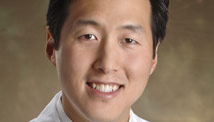 What do you call a chain-smoking, morbidly obese, soda addict who just graduated medical school?
What do you call a chain-smoking, morbidly obese, soda addict who just graduated medical school?














